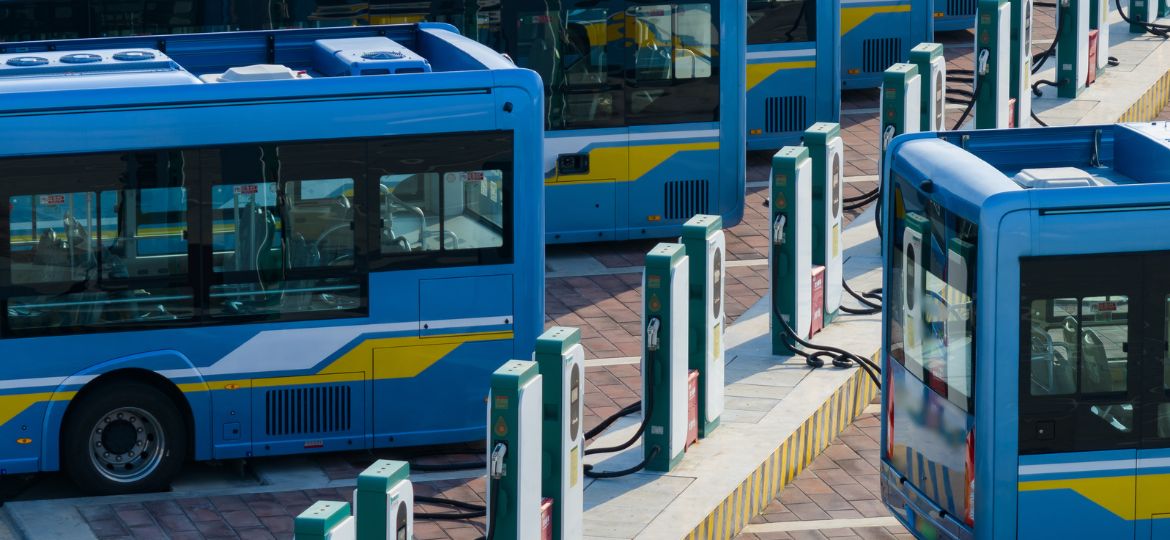
Decarbonization in Motion: Hydrogen, Biogas, and Electrification as Key Drivers of Emission-Free Transportation
In the journey toward decarbonization, hydrogen, biogas, and electrification play a crucial role across various sectors, each with specific applications that maximize their impact on reducing emissions.
Biogas
Biogas is a renewable gas produced from organic waste (agricultural, urban, and industrial). Its primary applications are in sectors where electrification is challenging or where replacing fossil fuels is difficult, such as:
- Industrial processes: Used in high-temperature industries such as cement, steel, and chemical manufacturing.
- Energy generation: Biogas can be used for electricity and heat generation in cogeneration plants.
- Waste management: It helps reduce methane emissions—a highly potent greenhouse gas—by capturing and utilizing organic waste.
Hydrogen
Green hydrogen, produced via electrolysis using renewable energy, is essential for hard-to-decarbonize sectors such as:
- Heavy industry: Used in steel production and other high-temperature industrial processes as a substitute for coal and natural gas.
- Energy storage: Hydrogen can store excess renewable energy for later use, helping to stabilize power grids.
- Raw materials: Currently, many industries rely on grey hydrogen derived from natural gas; the transition to green hydrogen will be a major sustainability milestone.
Electrification
Electrification powered by renewable sources is the cornerstone of decarbonization across various industries, including:
- Manufacturing: Many industrial processes can transition to electric alternatives, particularly in light manufacturing.
- Buildings: Heating and cooling can be electrified through heat pumps and other efficient systems.
Sustainable Transportation 2.0: The Power Trio of Hydrogen, Biogas, and Electrification
Heavy-duty vehicles, including trucks and buses, account for a significant share of CO₂ emissions. Reducing these emissions requires adopting advanced technologies and sustainable strategies to drive the transition toward a low-carbon economy.
Decarbonizing heavy transport is both a technical and economic challenge, but existing solutions provide a viable path toward cleaner mobility. Electrification, green hydrogen, and biofuels are among the most promising options. However, their large-scale deployment depends on government policies, economic incentives, and infrastructure development. Collaboration among governments, manufacturers, and operators will be crucial in achieving zero-emission targets for heavy transportation.
Key Technologies for Decarbonization
Electrification
- Battery electric vehicles (BEVs): Suitable for short- and medium-range routes, requiring robust fast-charging infrastructure.
- Fuel cell electric vehicles (FCEVs): Powered by hydrogen, these vehicles are ideal for long-haul transport due to fast refueling times and high energy density.
Biofuels
- Second-generation biofuels (such as biodiesel, bioethanol, and biogas) significantly reduce emissions by repurposing non-food organic resources.
- Existing infrastructure compatibility: These fuels can leverage current fossil fuel distribution networks, making them a convenient transition solution.
Synthetic Fuels (E-Fuels)
- Also known as e-fuels, they are produced using captured CO₂ and renewable energy, making them carbon-neutral.
- They are compatible with existing internal combustion engines, though high production costs remain a challenge.
Infrastructure Investments
Widespread adoption of electric and hydrogen-powered vehicles depends on an adequate refueling and charging network. Without significant investment in infrastructure, these technologies may struggle to achieve real market penetration due to a lack of accessibility for users.
Regulations and Economic Incentives
- Emission standards: Manufacturers must meet strict CO₂ emission targets by 2030. Failure to comply will result in substantial fines, driving innovation in cleaner technologies.
- Carbon pricing (ETS2): From 2027, the transportation sector will be included in the carbon trading system, mirroring existing industrial regulations. This will likely increase fossil fuel costs, making alternative vehicle technologies more attractive.
- Zero-emission vehicle subsidies: Battery electric and hydrogen vehicles remain significantly more expensive than their fossil-fuel counterparts. To encourage adoption, financial incentives are necessary, including:
- Direct purchase subsidies, as these vehicles can cost up to three times more than conventional models.
- Toll exemptions, a particularly effective measure in countries like Germany, where toll costs for commercial vehicles are high.
- Tax reductions to ease the financial burden on zero-emission fleets.
Consumer Demand for Sustainable Transport
Public awareness of carbon footprints is growing, prompting businesses to seek greener transportation solutions. Increasing consumer demand for low-impact logistics will play a crucial role in accelerating corporate sustainability commitments.
A New Era of Mobility: Time for Action
In a world committed to sustainability, the transportation sector must not be left behind. Decarbonization is not just an aspiration—it is a responsibility and an opportunity to redefine mobility. Hydrogen, biogas, and electrification are not just innovative technologies; they are the pillars of a future without emissions, where efficiency, economics, and environmental responsibility align. The transition will not be easy, but it is already underway. The question is no longer if clean transport will become a reality, but who will lead the change. Now is the time to move from words to action.
> Stay tuned for our next blog on decarbonization: ‘Industry Without a Footprint: Challenges and Opportunities in Industrial Decarbonization.’
References:

